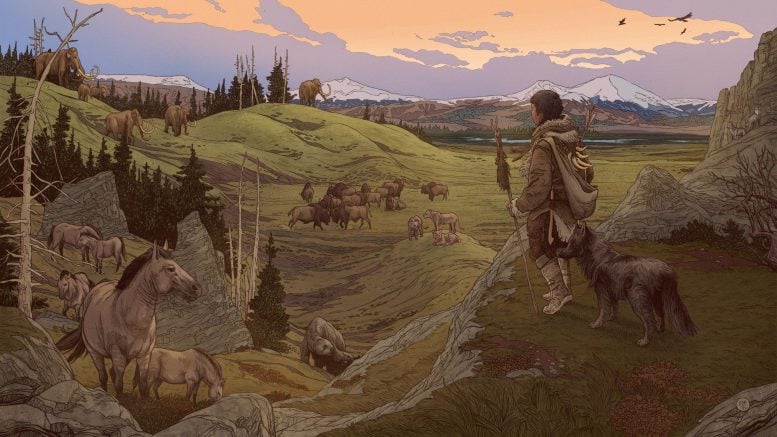Angela
Elite member
- Messages
- 21,823
- Reaction score
- 12,329
- Points
- 113
- Ethnic group
- Italian
See the following from the Pinhasi, Krause group
https://www.biorxiv.org/content/10.1101/2020.10.12.336628v1.full.pdf
"Abstract: Upward Sun River 1, an individual from a unique burial of the Denali tradition inAlaska (11500 calBP), is considered a type representative of Ancient Beringians who split fromother First Americans 22000–18000 calBP in Beringia. Using a new admixture graph modelcomparison approach resistant to overfitting, we show that Ancient Beringians do not form thedeepest American lineage, but instead harbor ancestry from a lineage more closely related to20 northern North Americans than to southern North Americans. Ancient Beringians also harborsubstantial admixture from a lineage that did not contribute to other Native Americans: AmurRiver Basin populations represented by a newly reported site in northeastern China. Relying onthese results, we propose a new model for the genomic formation of First American ancestors inAsia."
https://www.biorxiv.org/content/10.1101/2020.10.12.336628v1.full.pdf
"Abstract: Upward Sun River 1, an individual from a unique burial of the Denali tradition inAlaska (11500 calBP), is considered a type representative of Ancient Beringians who split fromother First Americans 22000–18000 calBP in Beringia. Using a new admixture graph modelcomparison approach resistant to overfitting, we show that Ancient Beringians do not form thedeepest American lineage, but instead harbor ancestry from a lineage more closely related to20 northern North Americans than to southern North Americans. Ancient Beringians also harborsubstantial admixture from a lineage that did not contribute to other Native Americans: AmurRiver Basin populations represented by a newly reported site in northeastern China. Relying onthese results, we propose a new model for the genomic formation of First American ancestors inAsia."


